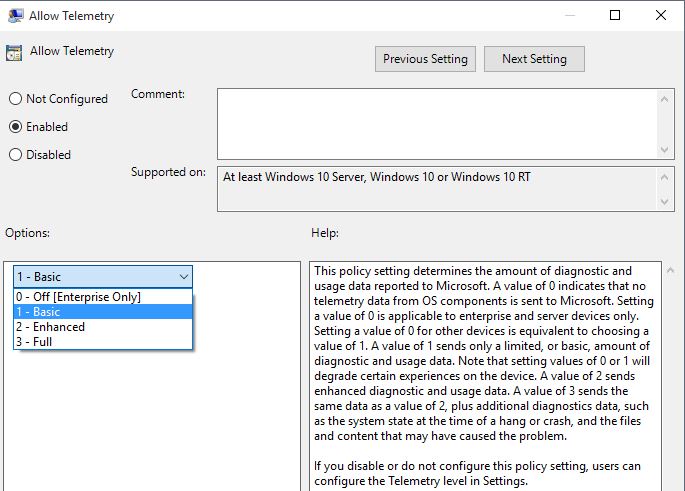Windows 10: data collecting all for the greater good
When it comes to Windows 10, Microsoft's new operating system, privacy is without doubt a hot topic. Ever since the operating system was released, fears about an all-seeing and reporting operating system were expressed by reviewers and users alike.
One of the core reasons for those fears was that Windows 10 was designed to deliver more data to Microsoft than previous versions of Windows.
The reporting defaults were mostly turned on if express setup was selected during installation, and users who customized privacy settings during setup or afterwards noticed that some options could not be turned off completely.
According to a new post by Terry Myerson, Microsoft's Executive Vice President of the Windows and Devices Group, on Microsoft's Blogging Windows site, that's all by design and in the best interest of the user.
Windows 10 was designed with two privacy principles: collecting data to make the product work better for the user, and to put the user in control in regards to the information the operating system collects.
Microsoft divides data into three levels on Windows 10.
Level 1: Safety and reliability data

Data that falls into this group include an anonymous device ID, device type and application crash data. Myerson notes that this does not include files or content, and that Microsoft has implemented safeguards to avoid collecting personally identifiable information such as email addresses or account IDs.
A great example of how this data was used effectively was just last month, when aggregate data showed us that a particular version of a graphics driver was crashing on some Windows 10 PCs, which then caused a reboot. This driver was not widely used, but still the issue was impacting customers. We immediately contacted the partner who builds the driver and worked with them to turn around a fix to Windows Insiders within 24 hours. We used the data on Insiders’ devices to confirm that the problem was resolved, and then rolled out the fix to the broad public via an update the next day – all-in-all, this data helped us find, fix and resolve a significant problem within 48 hours.
Level 2: Personalization data
In order to deliver a personalized Windows experience, Microsoft needs to know you better so that Windows can provide you with information and data that you consider useful.
..such as knowing whether you are a Seattle Seahawks fan or Real Madrid fan, in order to give you updates on game scores or recommend apps you might enjoy– or remembering the common words you type in text messaging conversations to provide you convenient text completion suggestions.
Level 3: Advertising data Microsoft's does not collect
Level 3 data is data that Microsoft does not collect. Myerson mentions email content, communication data or files.
Closing Words
Fact is, data collection cannot be turned off fully on all but Enterprise editions of Windows 10. This refutes the second privacy principle (You are in control with the ability to determine what information is collected) as controls are not provided to block all data collecting.
The only options home users and businesses get are to block level 2 data from being collected, and to reduce the amount of level 1 data that the operating system collects.
Now You: Would you give Windows 10 a chance if you could turn off all data collecting systems?
This article was first seen on ComTek's "TekBits" Technology News

- Log in to post comments